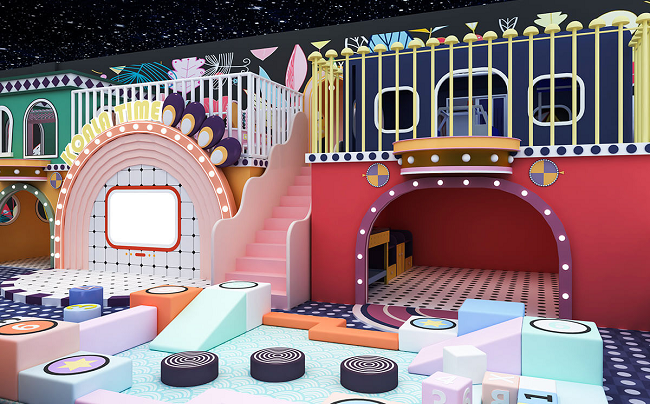In the United States, indoor children's play parks are widely popular, providing a safe and enjoyable recreational space for kids and a pleasant leisure option for families. However, opening an indoor play park requires careful cost analysis to ensure the sustainability and profitability of the business. This article will outline the primary cost elements involved in establishing an indoor play park in the United States.
Rental Costs:
One of the foremost considerations is the cost of leasing an appropriate venue. Indoor play parks typically require a large space to accommodate a variety of play equipment, seating areas, and other facilities. Rental costs may vary depending on the location and size of the area and typically constitute a significant portion of the total expenses. 
Playground Equipment and Fixtures Costs: Playground equipment and fixtures are the core of an indoor children's play park. This includes slides, trampolines, ball pits, climbing walls, mazes, arcade games, building block areas, and various other child entertainment facilities. The costs associated with procuring and installing this equipment can be quite substantial and require careful planning and selection.
Safety Facilities and Maintenance: Ensuring the safety of the indoor play park is of utmost importance. This includes safety nets, child protection devices, surveillance cameras, fire-fighting equipment, and more. Additionally, the regular maintenance and upkeep of the facilities should not be overlooked as it is vital to ensure the equipment's proper functioning and the safety of the children.
Employee Salaries and Training: Indoor children's play parks typically require the employment of staff to supervise children, maintain equipment, provide customer service, and clean and maintain the facilities. The costs associated with staff salaries, benefits, and training will form a part of the operational budget.
Marketing and Advertising Expenses: To attract more customers, indoor play parks need to engage in advertising and marketing activities. This includes online advertisements, social media promotions, printed promotional materials, and promotional events. These expenses help in promoting the park but also need to be budgeted for.
Management and Administrative Costs: Management and administrative costs encompass expenses related to lease management, insurance, accounting, legal services, and other office expenditures. These expenses are critical for ensuring the smooth operation of the business.
Food and Beverage Supplies: Indoor play parks often offer food and beverages to increase revenue and cater to customer needs. This necessitates an investment in food and beverage supplies and may require compliance with health standards and licensing requirements.
Conclusion: Establishing an indoor play park in the United States requires a comprehensive consideration of multiple cost factors. Budgeting and cost management are key to successfully operating such a business. Furthermore, understanding the local market, competition, and target customer base is essential. Only with a thorough understanding of the cost structure can effective business strategies be developed to ensure the sustainable growth and profitability of the indoor children's play park.